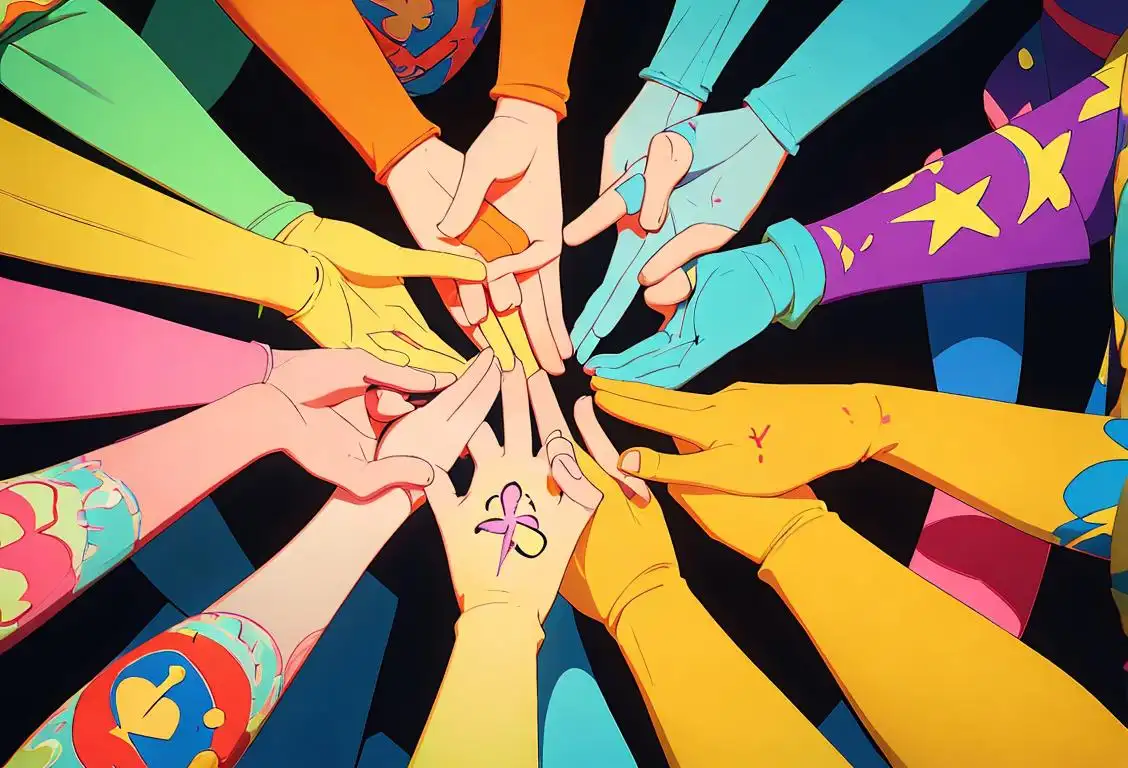National Ulos Day

Hey there, folks! Get ready to wrap yourselves in Ulus and celebrate National Ulos Day. It's a day filled with warmth and tradition, so let's dive right in and discover the fascinating story behind this special day.
When is Ulos Day?
It's national ulos day on the 17th October.
Unveiling the Beauty of Ulos
Ulos, oh glorious Ulos! This precious fabric holds deep cultural significance for the Batak people of North Sumatra, Indonesia. It is more than just a piece of cloth; it is a symbol of love, protection, and unity.
The Batak people consider Ulos as an integral part of their identity. Each Ulos is carefully handwoven using traditional techniques passed down through generations. The intricate patterns and vibrant colors tell stories of their ancestors and the connection between humanity and the spiritual realm.
On National Ulos Day, people across Indonesia celebrate the rich heritage of Ulos by wearing this magnificent fabric with pride. It's a day to honor the craftsmanship and the love poured into each thread that creates a tapestry of culture.
But Ulos is not just a fashionable accessory; it has a deeper purpose. Ulos is often given as a gift to loved ones during significant life events such as weddings, births, and funerals. It represents blessings, protection, and a bond that transcends time.
So, this National Ulos Day, let's remember the significance of this extraordinary fabric and pay tribute to the culture it represents.
History behind the term 'Ulos'
3000 BCE
Ancient Beginnings
Ulos is a term that originates from the Batak people, an indigenous group in North Sumatra, Indonesia. The term 'ulos' refers to the traditional woven cloth that holds significant cultural and symbolic meaning for the Batak community. The practice of weaving ulos dates back to around 3000 BCE.
13th Century
Expansion of Weaving Techniques
During the 13th century, weaving techniques in the Batak region started to grow more intricate. Skilled weavers introduced various patterns and motifs into the ulos fabric, which added cultural depth and aesthetic value to the textiles. Each weaving pattern had a unique meaning, representing aspects of social status, rituals, or personal stories.
19th Century
Dutch Colonial Influence
In the 19th century, the Dutch colonial era swept over Indonesia, including the Batak lands. The ulos fabric faced challenges under Dutch rule as it was discouraged due to the promotion of Dutch-style clothing. However, the Batak community, committed to preserving their traditional heritage, proudly continued to weave the ulos fabric in defiance of the colonial pressure. This period showcased the resilience and determination of the Batak people.
1960s
Ulos Revival
During the 1960s, there was a resurgence of interest in traditional cultures around the world, including the Batak people. This cultural revival sparked a renewed appreciation for the ulos fabric. The Batak community actively promoted the ulos weaving tradition, presenting it as a symbol of their identity and cultural heritage.
2019
UNESCO Recognition
In 2019, the ulos fabric was officially recognized as a Masterpiece of Oral and Intangible Heritage of Humanity by UNESCO. This international recognition highlighted the cultural significance and exceptional craftsmanship of the ulos weaving tradition. The ulos fabric plays a crucial role in Batak ceremonies, rituals, and even daily life, remaining a cherished symbol of heritage for generations.
Did you know?
Did you know that the Batak people believe Ulos can protect against evil spirits? It's like having a stylish, otherworldly bodyguard by your side!Tagged
awareness fun loved onesFirst identified
17th October 2016Most mentioned on
17th October 2016Total mentions
161Other days
Compliment Day
Cheese Pizza Day
Pumpkin Day
Medal Of Honor Day
Guac Day
Foundation Day
Suicide Prevention Day
Memorial Day
Cancer Survivors Day
Bacon Day









